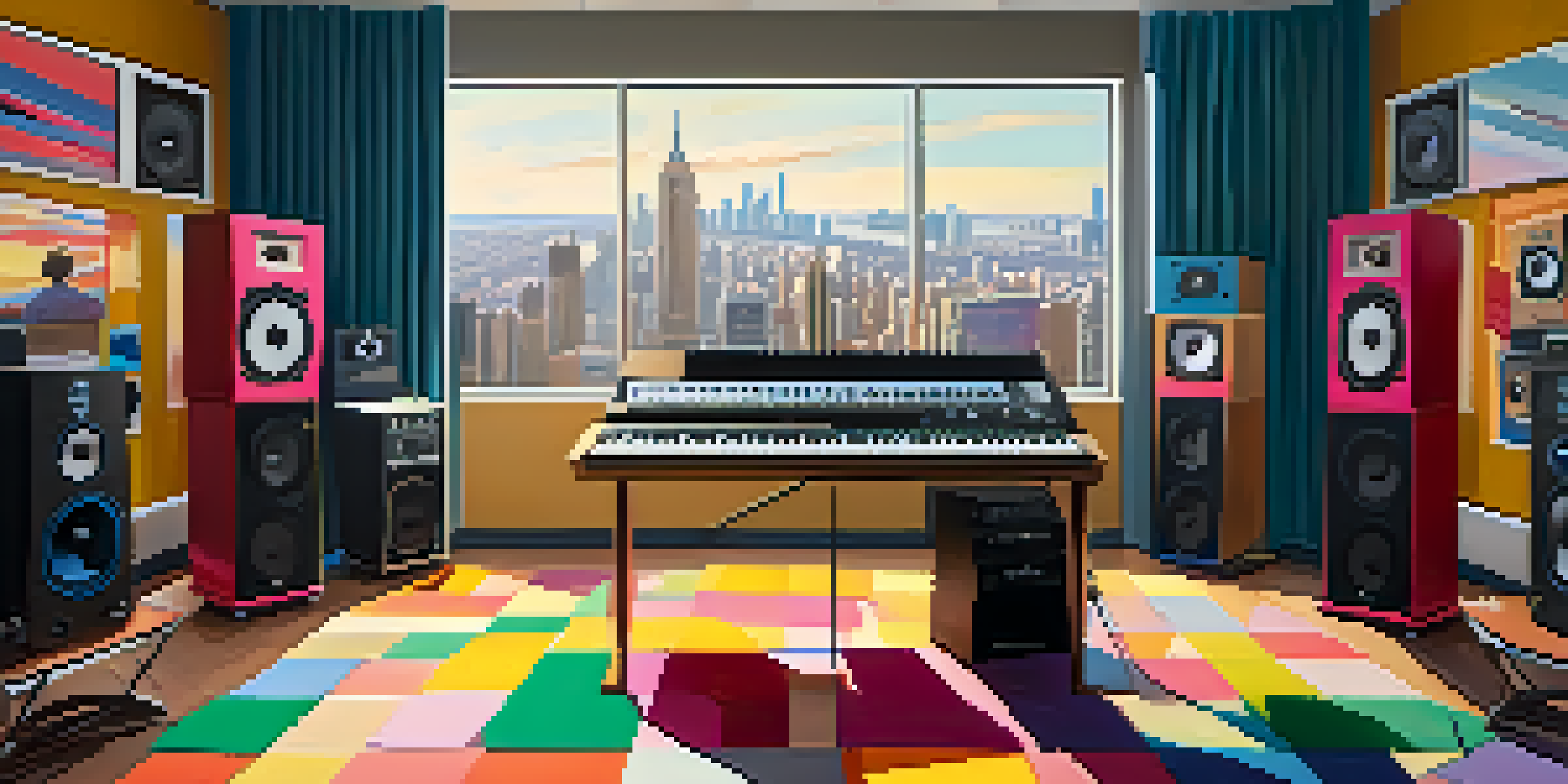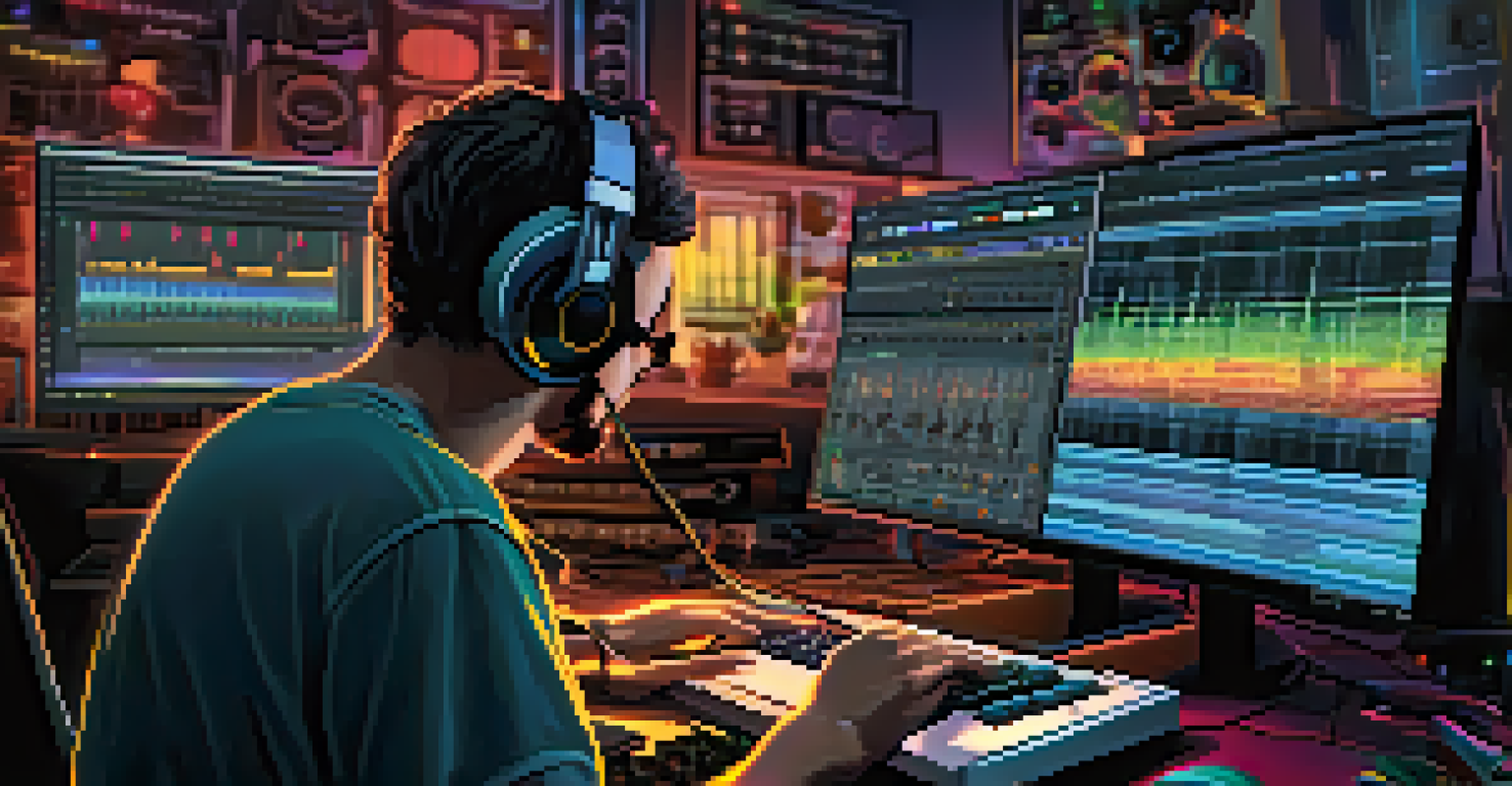The Importance of Sound Design in Animated Films

Understanding Sound Design: The Basics Explained
Sound design refers to the creation and manipulation of audio elements in a film. It encompasses everything from dialogue and sound effects to background music. In animated films, sound design plays a pivotal role in bringing characters and stories to life.
Sound design is a crucial element in storytelling, helping to create a deeper emotional connection with the audience.
Think of sound design as the emotional backbone of an animated film. Just as a painter uses colors to convey feelings, sound designers use audio to evoke emotions and set the tone. Without effective sound design, even the most beautifully animated scenes can fall flat.
By enhancing visuals with the right audio, sound design helps immerse viewers into the animated world. It guides their emotional journey, making them feel joy, fear, or nostalgia, ultimately enriching their viewing experience.
How Sound Design Enhances Storytelling
In storytelling, sound design serves as an invisible thread that ties the narrative together. It can foreshadow events, accentuate plot twists, or deepen character development. For instance, the sound of a soft breeze can hint at a character's vulnerability.

Consider the iconic sound effects in animated films like 'Toy Story' or 'Finding Nemo.' These sounds not only complement the visuals but also enhance the story's emotional depth. A well-timed sound can transform a simple action into a memorable moment.
Sound Design as Emotional Backbone
Sound design plays a crucial role in evoking emotions and enhancing the viewing experience in animated films.
Moreover, sound design helps in world-building. The ambient sounds of a bustling city or the chirping of birds in a serene forest add layers to the story, making it feel more real and relatable to the audience.
The Role of Music in Animated Films
Music is a crucial component of sound design, setting the emotional tone for scenes. Whether it’s an uplifting score during a triumphant moment or a somber melody during a farewell, music can elevate the narrative significantly. It acts as a guide for the audience's feelings.
Music can change the world because it can change people.
For example, think about how the score in 'The Lion King' enhances the emotional weight of Simba's journey. The soaring music during key scenes not only captures the essence of the story but also resonates with viewers on a personal level.
Moreover, original songs can become anthems that audiences associate with the film. Just as 'Let It Go' from 'Frozen' became a cultural phenomenon, memorable music can create lasting connections between the audience and the film.
Creating Character Identity Through Sound
In animated films, sound design helps to define characters and their personalities. Unique sound cues associated with specific characters can make them more memorable and relatable. For instance, a whimsical chime might accompany a quirky character, while a deep rumble could signify a formidable foe.
This technique not only reinforces character traits but also assists the audience in understanding their role within the story. Think of how the sounds associated with characters in 'Shrek' or 'Despicable Me' add layers to their identity.
Music Shapes Audience Connection
The right music in animated films significantly elevates emotional moments, creating lasting connections between the audience and the story.
Furthermore, sound can evoke empathy. When a character experiences joy or sorrow, the accompanying sounds can amplify those feelings, allowing the audience to connect with them on a deeper level.
Sound Effects: The Unsung Heroes of Animation
Sound effects are often the unsung heroes behind the scenes of animated films. These audio elements help create a sense of realism and immersion, making the animated world feel alive. From the crunch of footsteps on gravel to the whoosh of a superhero flying, sound effects enhance every action.
Take, for example, the sound design in 'Kung Fu Panda.' The exaggerated sound effects during fight scenes not only bring humor but also heighten excitement. This attention to detail makes the action sequences more dynamic and engaging.
Additionally, sound effects can serve practical purposes, such as indicating movement or signaling changes in the scene. They guide the audience's attention and help them follow the story seamlessly.
The Collaborative Nature of Sound Design
Sound design in animated films is a collaborative process that involves various creative professionals. From sound designers and composers to voice actors and directors, each plays a vital role in shaping the final product. This teamwork ensures that the audio complements the visual storytelling.
For instance, during the production of a film, sound designers work closely with animators to synchronize sound effects with on-screen actions. This collaboration is essential for achieving a cohesive viewing experience, where audio and visuals harmoniously blend.
Collaboration Drives Sound Innovation
The collaborative nature of sound design involves various professionals working together to ensure audio complements visual storytelling effectively.
Moreover, feedback loops between different departments help in refining the sound design. This iterative process leads to innovative audio solutions that enhance the overall impact of the film.
The Future of Sound Design in Animation
As technology evolves, so does the field of sound design in animation. Advances in audio technology, such as spatial audio and immersive sound environments, are changing how audiences experience animated films. These innovations allow for a more engaging and realistic sound experience.
Imagine watching an animated film where sounds seem to come from all around you, immersing you in the story like never before. This level of audio fidelity can create a deeper connection between the audience and the film's narrative.

Looking ahead, the integration of virtual reality (VR) and augmented reality (AR) in animation could further revolutionize sound design. As filmmakers explore these new frontiers, the possibilities for storytelling through sound are bound to expand, offering audiences even richer experiences.